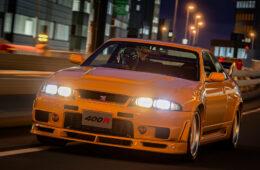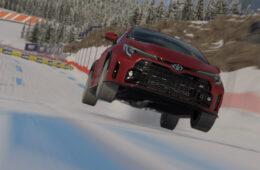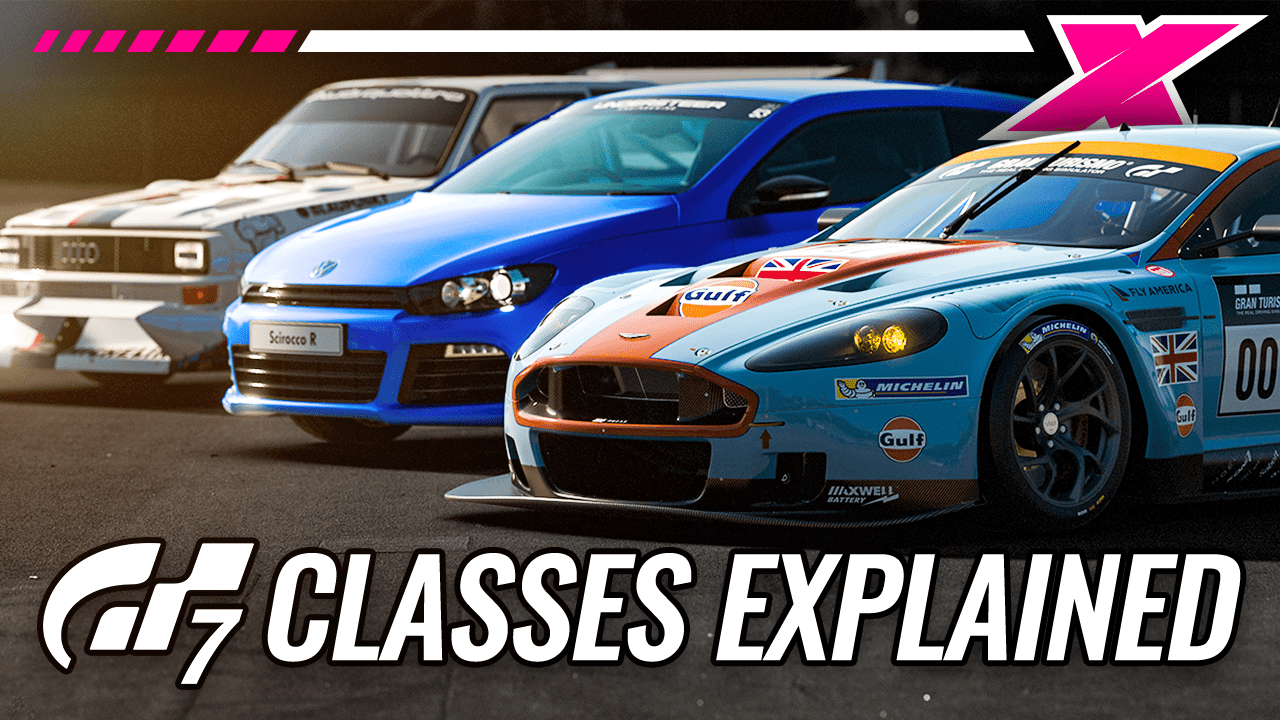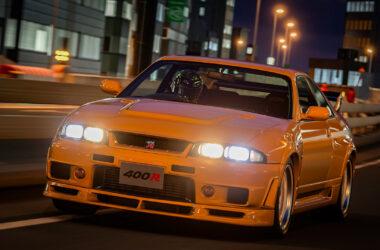By Ross McGregor and John Munro
Gran Turismo 7, like many other racing games, features cars with a variety of engine and driveline layouts. If you are new to the world of motorsport, you may not fully understand what these differences are, and the impact they have on the driving experience.
Moving the engine from the front of the car to the back for example will largely affect the handling of the car in braking zones and through the corners, and the different drivetrain layouts will each require their own unique driving style.
Some setups will suit certain things better, which is why world rally cars are all four-wheel drive, and single-seaters are all rear-wheel drive.
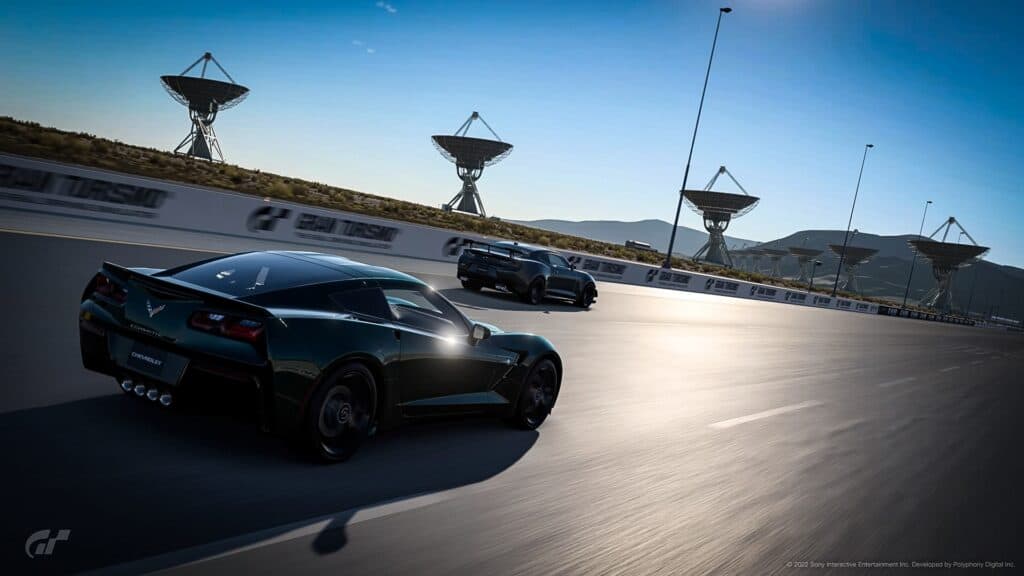
The Gran Turismo franchise has always been a great tool for learning these differences, with cars categorised according to their drivetrain and engine layouts. That’s why you will often see a random combination of letters such as FF, FR or MR assigned to your noble stead.
In the video, I explain to you what each of these combinations means, and how this defines the way these particular cars will likely handle. I will also go over the different categories for select race cars in the game, to help you understand a little bit more about the structure of car classes within GT7.
Right then, let’s start with the layout you are likely to meet first on your Gran Turismo journey, FF which stands for Front Engine, front-wheel drive.
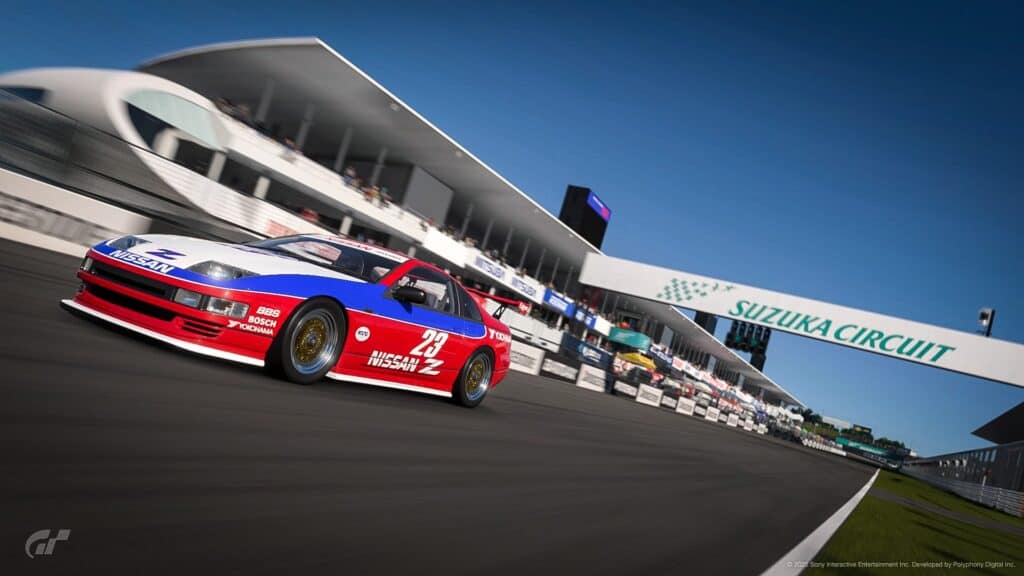
Front-engine, front-wheel drive
Everyday hatchbacks, like the 2014 Volkswagen Polo GTI for example, have their engine at the front, providing drive to the front wheels only. Manufacturers will construct cars in this fashion as it’s cheaper and more efficient to mate the front drivetrain to the engine and assemble at the same time.
Cars like this tend towards understeer, given that the front tyres must both steer and drive the car at the same time. Most of the mass of the car is on the front axle too, meaning the rear tyres have a much easier time, causing less wear.
This is why you don’t often see super powerful front wheel drive cars, because the front tyres simply couldn’t cope with the workload. However, for most every day road cars, you simply never need that much power.
The other benefit to front-engine front-wheel drive cars is their stability. It’s generally much harder to spin an FF car than it is to spin a rear-wheel-drive car, meaning these are the perfect type of cars to begin your racing or driving journey as a novice.
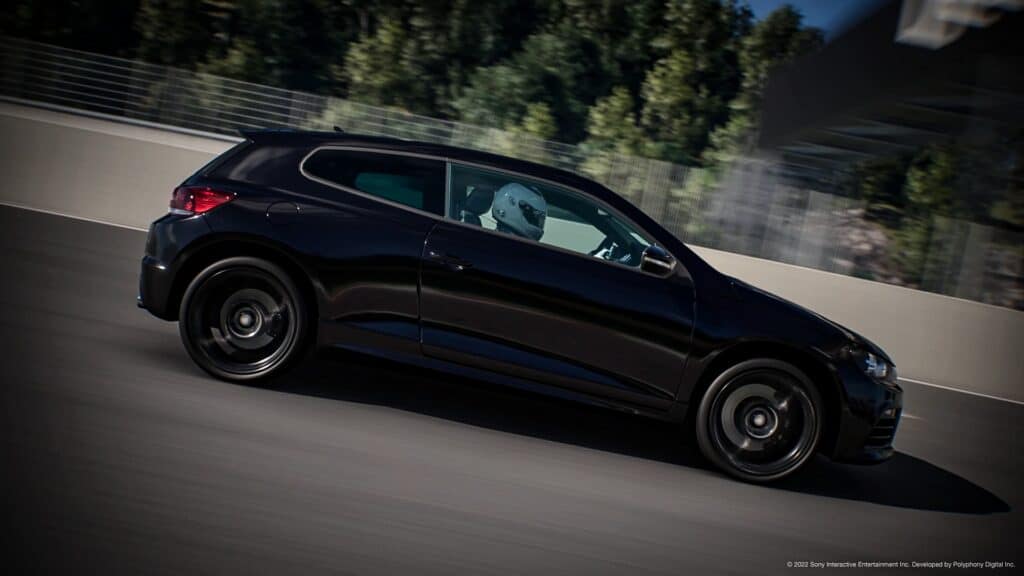
Front-engine, rear-wheel drive
Next, up then, we have the other most common layout, FR. Sports cars such as the Nissan Fairlady/370Z have the engine at the front with the rear wheels providing the drive. Commonly this leads to better weight distribution and car balance compared to front-wheel-drive cars.
Power coming from the rear axle also increases the chance of oversteer, and a more enjoyable driving experience! If sliding is your thing, then you will be a big fan of this layout, but of course the cost of this is that it’s far easier to spin. You are essentially pushing the car round the track rather than pulling it round, meaning that the back is far more likely to overtake the front.
However, because the front tyres do the steering and the rear tyres provide momentum, they share the load more evenly and can therefore cope with a bit more cornering ability and power. This explains why sports cars and supercars are generally rear-wheel drive instead of front-wheel drive like many more sensible road cars. They aren’t always front-engined though…
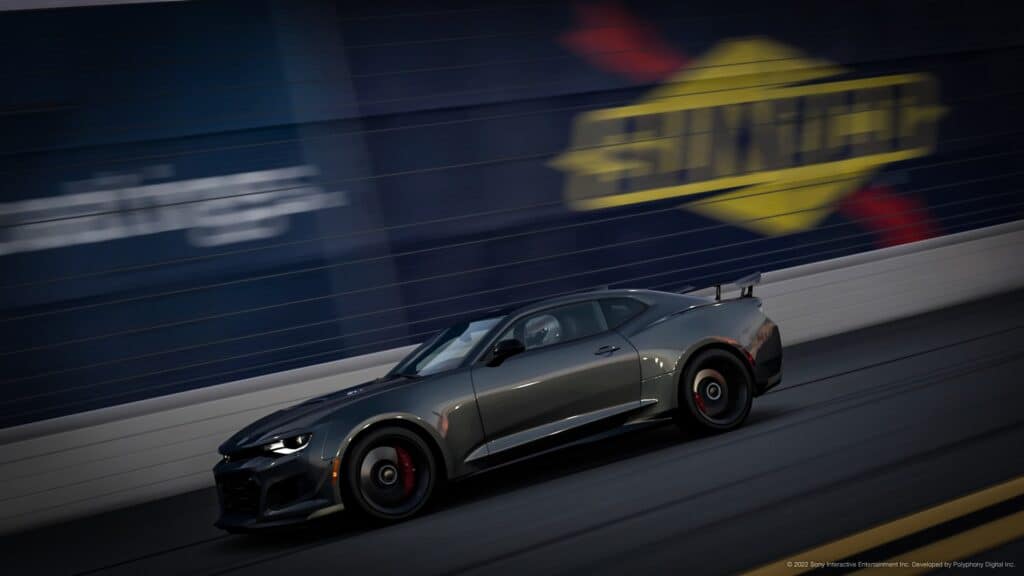
Mid-engine, rear-wheel drive
Supercars such as the Ferrari 458 Italia, and more focused sportscars like the Alfa Romeo 4C, commonly have their engines in the middle of the car – ahead of the back wheels – and are rear-wheel drive.
These cars offer the best weight distribution considering the engine and gearbox – the heaviest mechanical parts of the car – are located near the centre of the car. This means they corner extremely well and have great traction.
Sometimes, however, they tend towards understeer at low speeds and maybe aren’t quite as stable in the wet as other driveline layouts. Even in dry conditions, if you get a snap of oversteer in an MR car, it can be harder to save and quicker to rotate than cars with their engines at the front.
If you can cope with the liveliness, it’s likely to give you faster cornering speeds and lap times. In fact, most of the fastest road cars on the planet are mid-engine, which tells you all you need to know.
So we have had front-engine and mid-engine rear-wheel drive cars, but what about those with their engines right at the back?
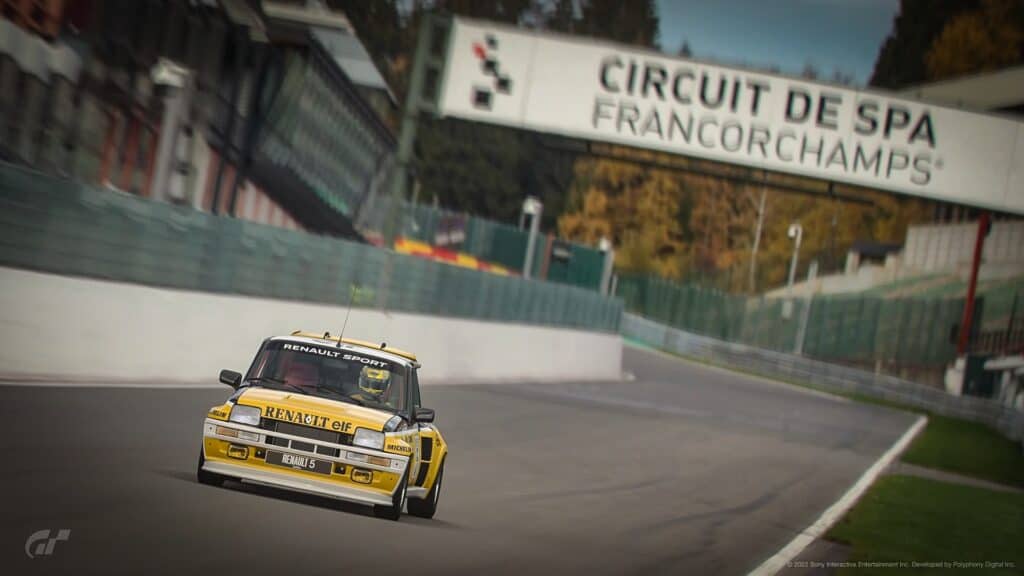
Rear-engine, rear-wheel drive
Vehicles like the Volkswagen Beetle, the original Alpine A110, and Porsche’s 911 series of cars all have this rare engine and driveline layout, with the engine situated beyond the rear wheels and powering them in the process.
Most of the car’s mass is, as you can imagine, on the rear axle, so traction is excellent, but this has a knock-on effect of a floaty front end. Somehow Porsche has engineered a way around this with their 911 supercars, showing that setup is crucial to car feel.
Many people believe Porsches actually have some of the best handling characteristics of any cars, but others struggle to grasp the unique balance and feel, explaining why 911’s often split opinions amongst petrolheads.
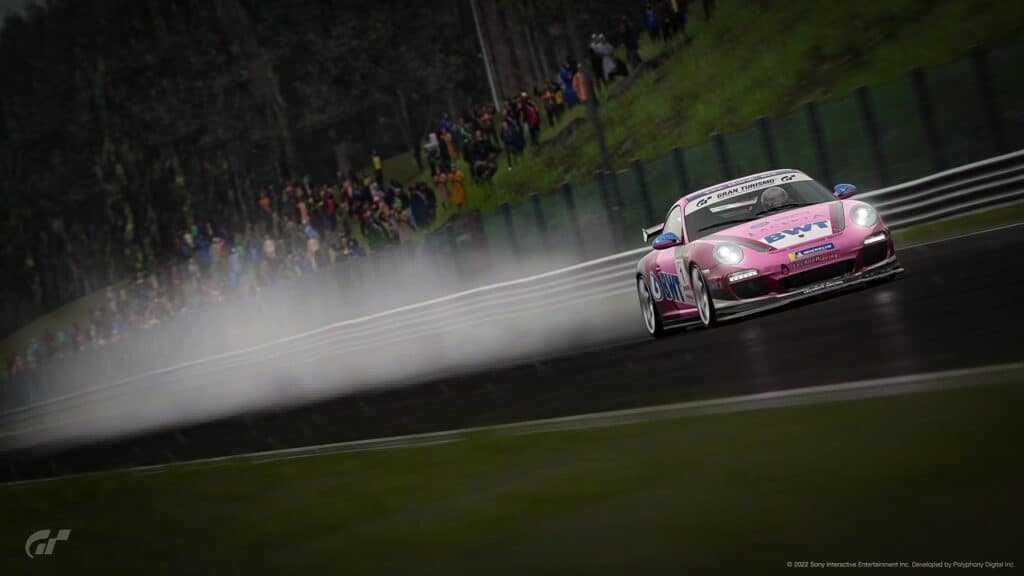
Four-wheel drive
So we have covered both front and rear wheel drive cars, but there are also four-wheel drive – or all-wheel drive – cars in GT7. Many of these have their engines at the front, and some are mid-engine.
Because each wheel produces power, four-wheel-drive cars have tonnes of traction and are therefore ideally suited to wet or off-road conditions – think rally homologation specials such as the Mitsubishi Lancer Evolution or Toyota Celica GT-Four. This is why nearly every modern-day rally car will use this drivetrain layout.
The downsides associated with four wheel drive on circuits are mainly the natural understeer it causes and the extra weight. Normally, in order to get positive rotation coming out of corners, and therefore oversteer, you essentially need the rear of the car to be trying to overtake the front of the car which you will get with powerful rear wheel drive cars.
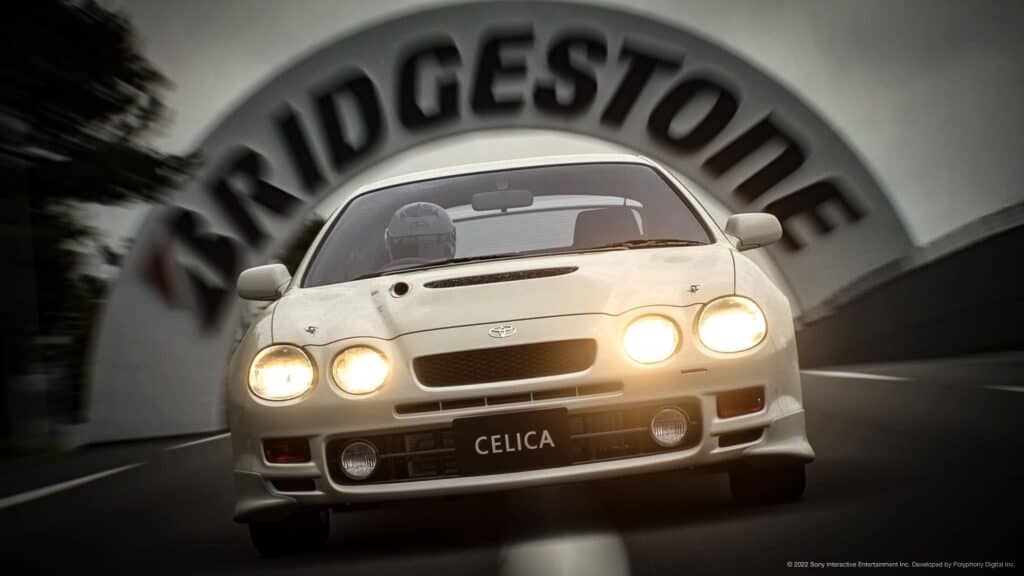
However, with 4WD, when you hit the accelerator, the front wheels also do the driving, so you don’t get the same rotation. More grip and stability, yes, but not always laptime.
Some Mid-Engine supercars such as the Lamborghini Huracan and the Audi R8 V10 Plus are also 4WD, and you may think that 4WD traction and balance combined with optimised weight distribution would be a match made in heaven. However, the negatives that I mentioned earlier, these being the extra mass and understeer, means these cars are viewed as less-focused supercars.
They are however, a safer choice of supercar when dealing with uneven surfaces or inclement weather. Ideal for British roads then…
So that’s a look at the different engine and drivetrain layouts that categorise the majority of Gran Turismo 7’s car list, but generally, events that are grouped in this fashion are road car-based. What about the other main categorisation method present in GT7? What about the various classes of racing cars? Let’s take a look at these next…
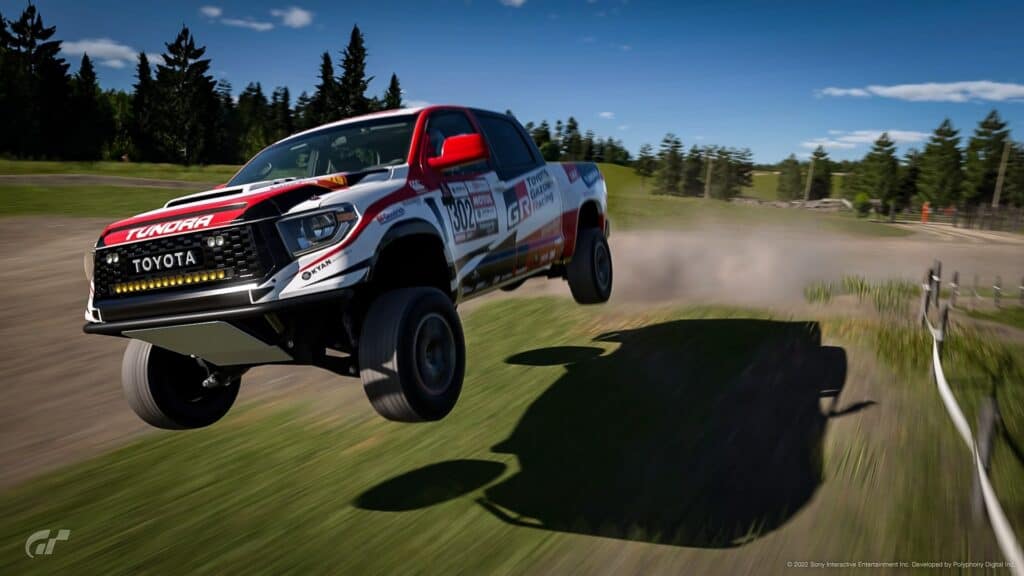
Group 4 (Gr.4)
The entry-level category for race cars In GT7 is known as Group 4. The majority of Gr.4 cars are those which would normally be classed as GT4 cars, a popular specification for worldwide GT racing.
These cars are a great introduction to race-spec machinery, and the best thing about this form of motorsport is that the performance between cars is balanced. This means that any manufacturer can come along and build a GT4 version of their existing car, be it a family-friendly hatchback, a sports car or even a supercar.
In GT7, this idea is taken even further, as we see a mixture of real-world GT4 cars and fantasy GT4 cars based on their road-going counterparts. It’s kind of cool that you can have a fair race between a Suzuki Swift and a Bugatti Veyron.
One final thing worth mentioning is that Gr.4 isn’t just GT4 inspired machinery. There are other cars in there which are from a different series or era, but fit in well and can be balanced appropriately with the rest of them. Cars like the sensational Alfa Romeo 155 from 1993, or the Renault Sport Mégane Trophy.
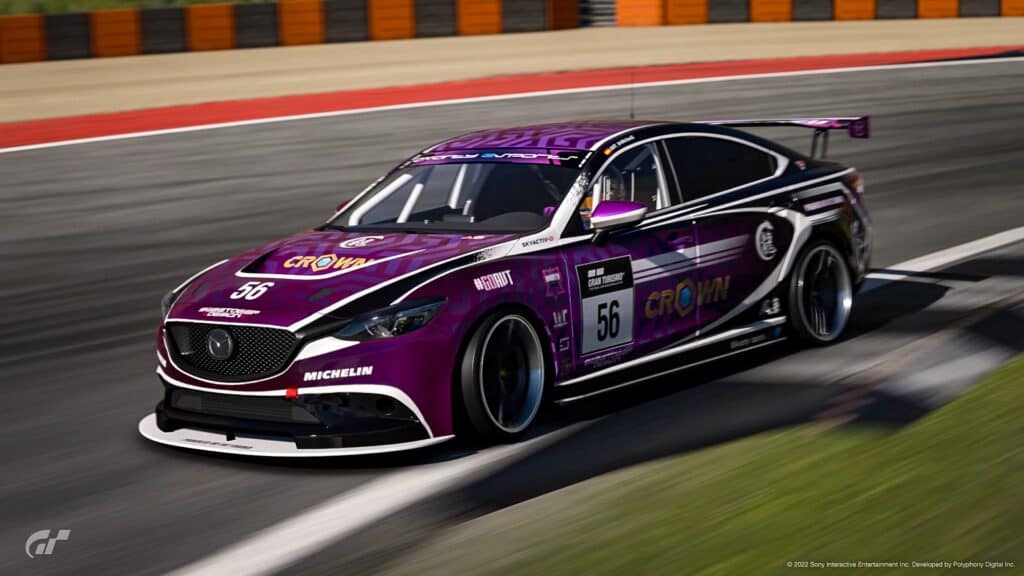
Group 3 (Gr.3)
Group 3 is a step up from Gr.4 as you would expect, and this mainly consists of, you guessed it, GT3 racing cars. Again, much like Gr.4, there are a combination of real-world GT3 racers, fantasy GT3 spec cars we all wish were real and several other racing cars from the past that are at a similar pace and can be balanced accordingly.
These cars have more power than the Gr.4’s, around 150 extra, and more advanced aerodynamics, making them quicker in the corners as well as on the straights.
The oddballs in this category include cars from the JGTC era of Japanese sports car racing in the late nineties, as well as some older GT1 machinery from before and after that category’s golden era of outright Le Man winners.
Some of these are a little quicker on the straights but slower through the corners and vice versa, creating an excellent balance for tactical racing on GT7.
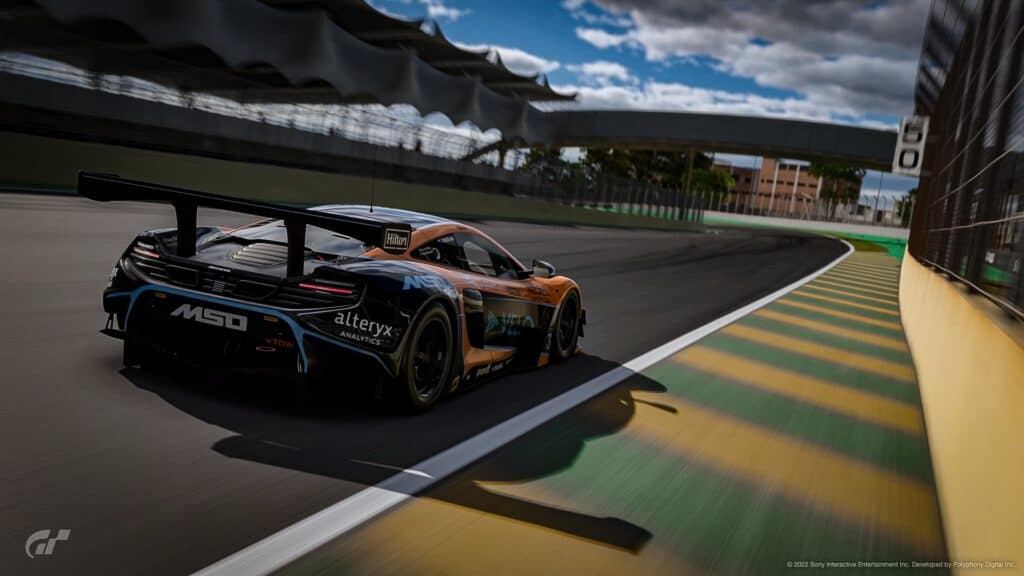
Group 2 (Gr.2)
Group 2 is next, and these cars bridge the gap between GT3 spec cars and outright Le Mans prototypes. This includes the modern GT500 cars that produce sensational levels of downforce, and late nineties GT1’s from their aforementioned golden era.
There are less cars in this category but that doesn’t take away from the variety, and this is probably the best example of David versus Goliath within a race car category in GT7.
The Japanese GT500 cars are similar to those previously seen in the DTM series of old, producing 650bhp from their turbocharged two litre engines. The downforce beats that of the GT1’s, but on the straights, the brutal nature of the McLaren F1 GTR longtail or Mercedes CLK-LM will be tough to resist.
It’s modern technology and grip, versus old school grunt and charisma. Excellent.
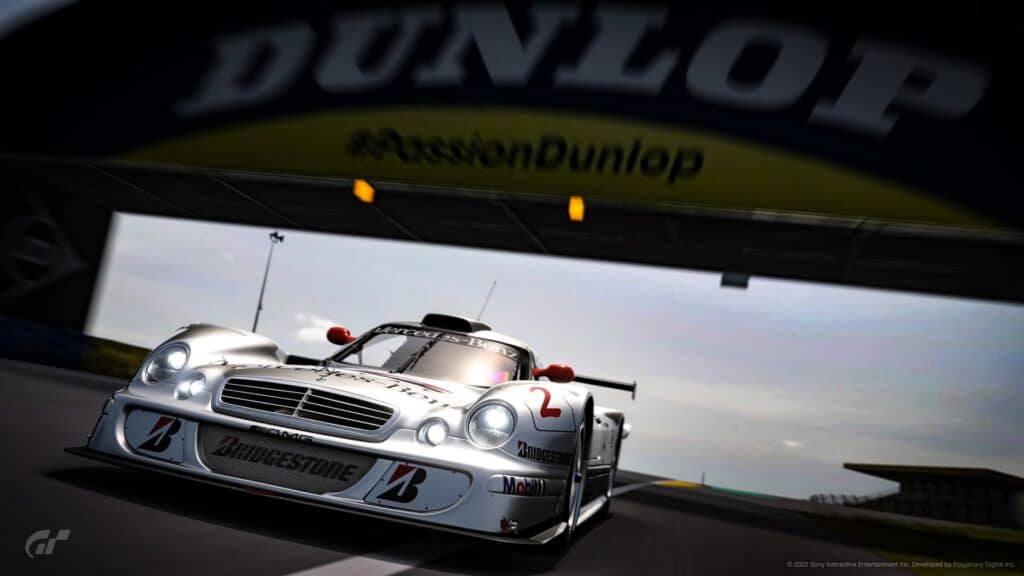
Group 1 (Gr.1)
The fastest category in GT7 is the prototype inspired Group 1 class, consisting of modern-day LMP1 cars, Group C monsters and futuristic Vision prototypes. Again, this is a great collection of cars that provide a clear battle between past, present and future.
These cars are some of the quickest on the planet after top tier single-seaters, and the downforce levels are mind-boggling. Again, the balance of performance is there, meaning you can either go for a visceral and powerful late 80’s Group C or pick something like an LMP1 Toyota that will run away through the corners.
The modern and futuristic options often involve a hybrid element as well, utilizing electric power often generated under braking to give you a helping hand down the straights.
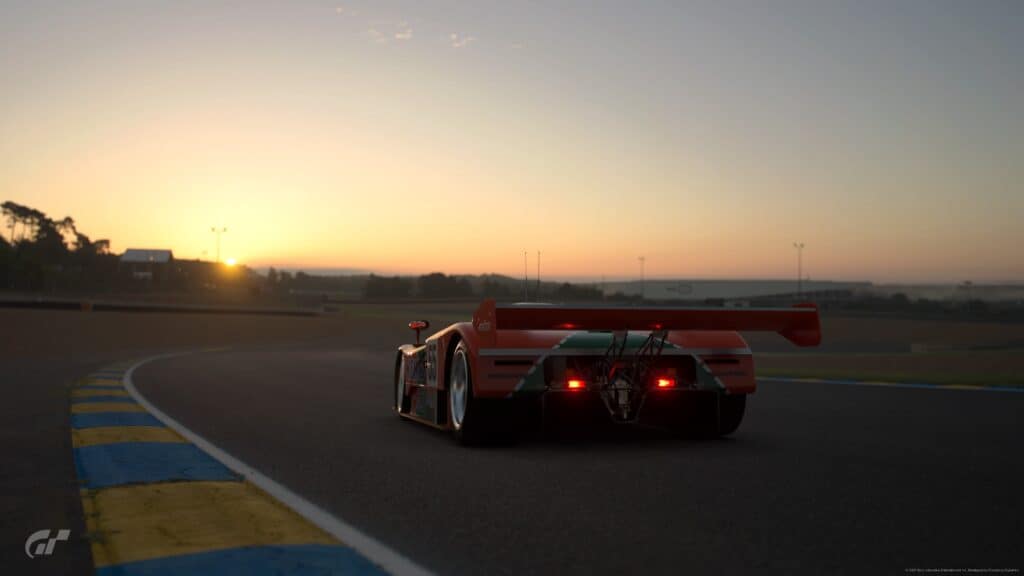
Group B (Gr.B)
The final class of race car I want to mention is Group B, which is solely for purpose built rally cars. Rather confusingly, Gr.B in GT7 doesn’t just mean Gr.B spec cars we all know and love from the 80’s… They probably should have called it Group R instead… Wait no that just makes it Gr.R for short…
Nevertheless, Gr.B in GT7 mainly consists of modern-day rally machinery but also includes a couple of golden oldies, such as the actual Group B Peugeot 205 T16 Evo2 and the legendary Pikes Peak Audi Quattro.
Dirt events may require a Gr.B car, but others will just need you to stick some dirt tyres on whatever else you want to take off in. Just make sure you buy some adjustable suspension….
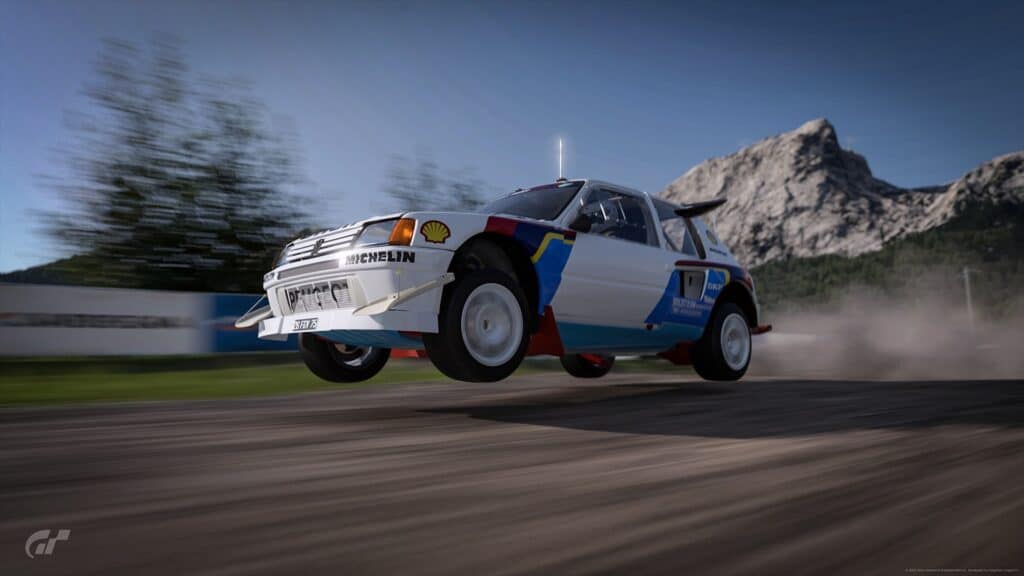
That’s it for the different classes, there are of course other racing cars such as the single-seaters and some classic Le Mans cars, but these aren’t categorised in the same way.
So then, which class of racing car is your favourite? Are you an FR fan, or MR, or even FF. Let us know DB (DB = Down Below. It’ll catch on).



